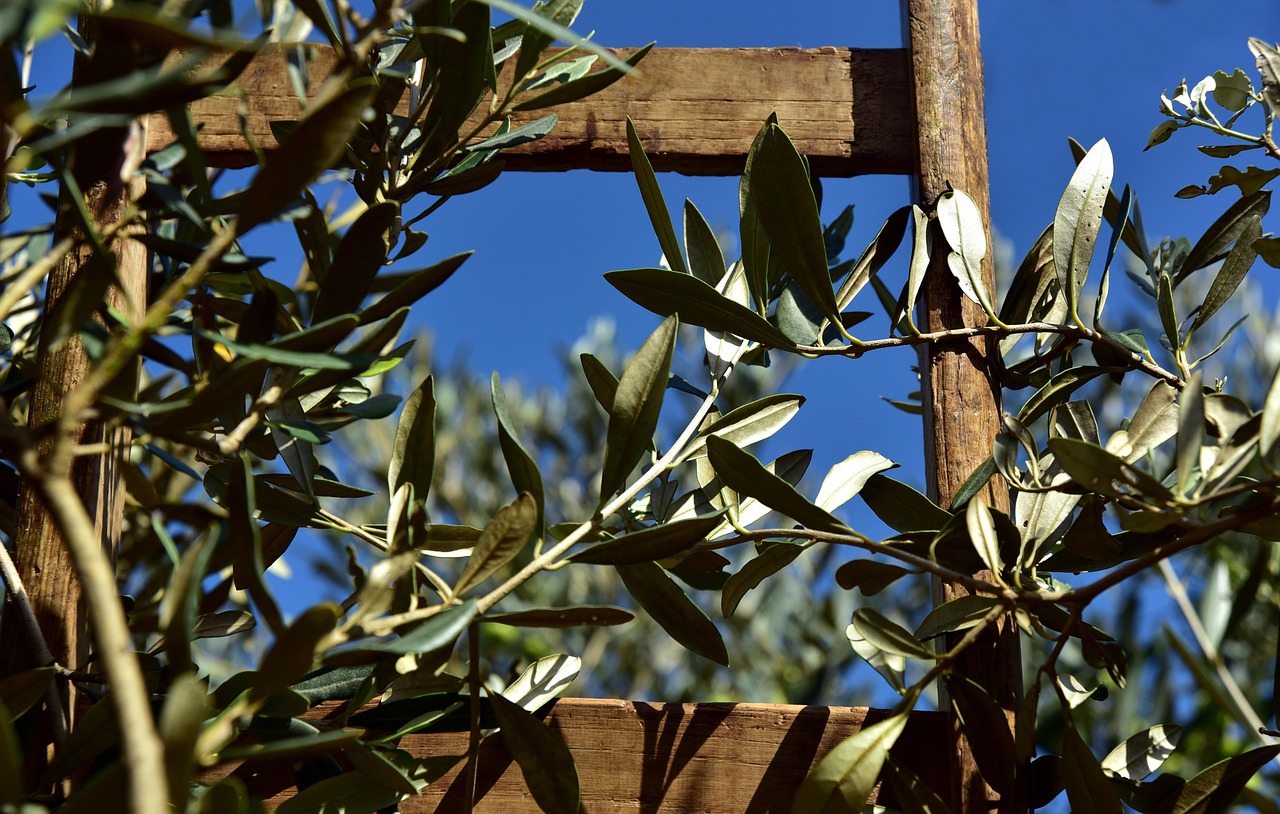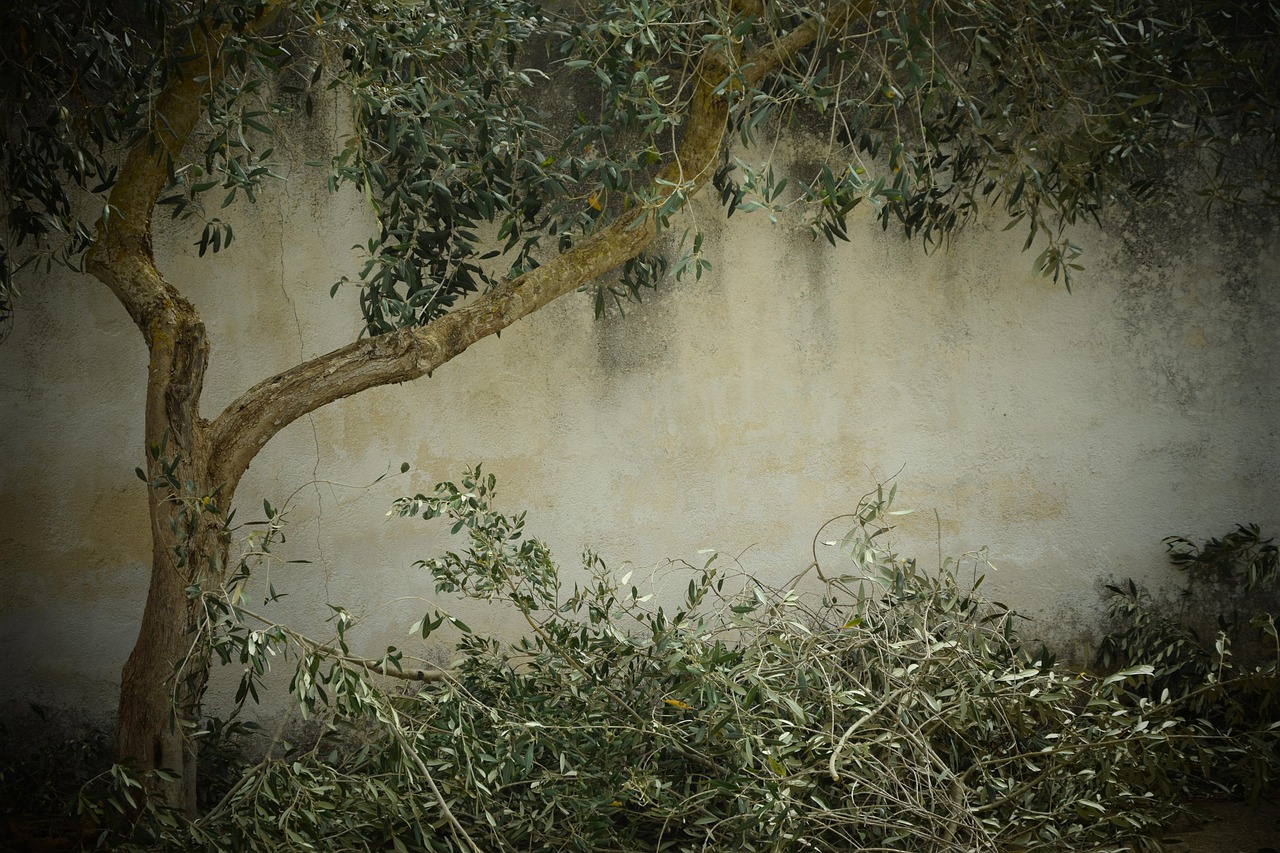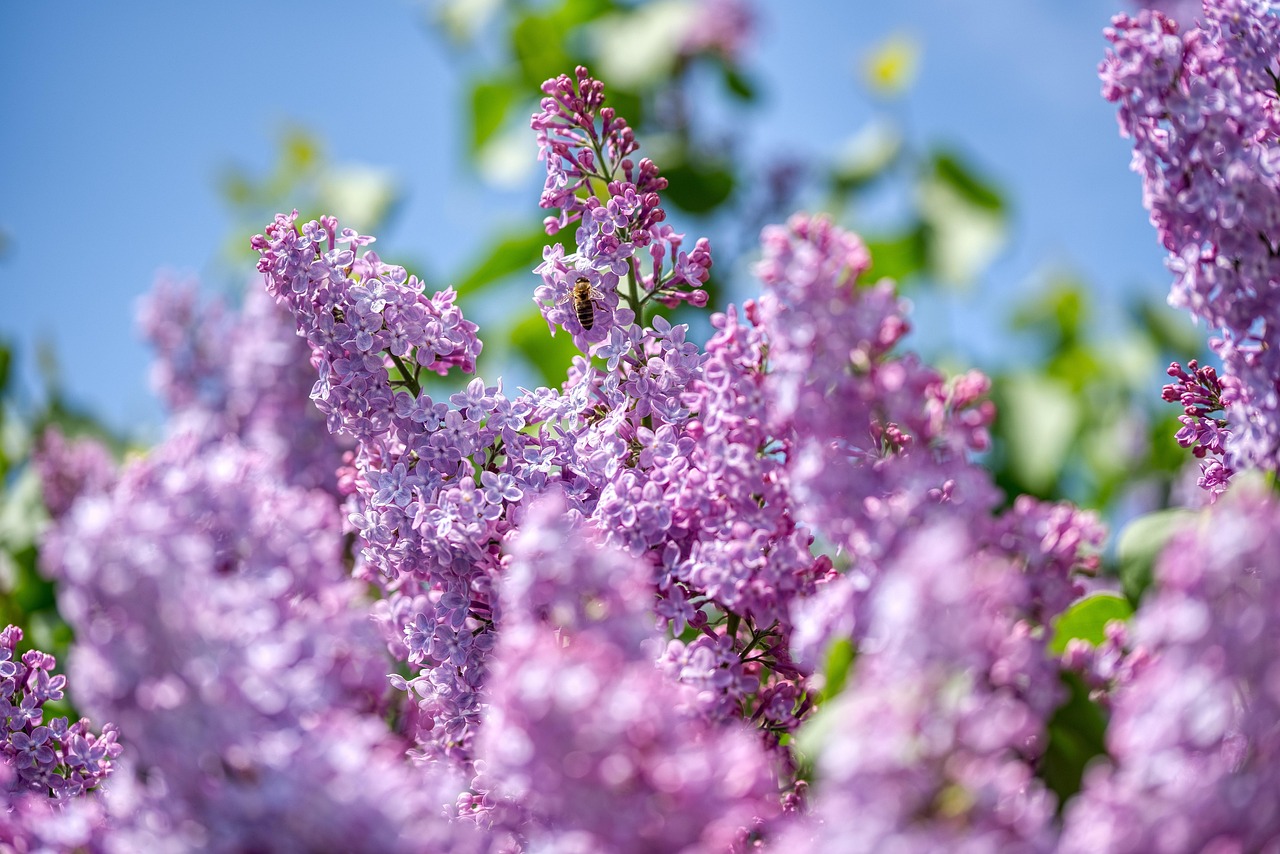Pruning olive trees is essential for maintaining their health and productivity. Effective methods include formative pruning, maintenance pruning, and rejuvenation pruning. Each method caters to different growth stages and objectives, promoting sustained growth and optimal fruit production.
Olive trees are renowned for their beauty and the delicious fruit they produce. They thrive in Mediterranean climates but can also grow in various regions with the right care. Pruning is a critical aspect of olive tree cultivation. It directly impacts the tree’s health, fruit yield, and overall appearance. Proper pruning techniques can enhance air circulation, light penetration, and reduce the risk of disease.

Understanding the different pruning methods is crucial for both novice and experienced growers. Each method serves a unique purpose and is applied at specific times of the year. The following table summarizes the primary pruning methods used for olive trees:
| Pruning Method | Description | Best Time to Prune |
|---|---|---|
| Formative Pruning | Establishes the shape and structure of young trees. | Late winter or early spring. |
| Maintenance Pruning | Removes dead, damaged, or overcrowded branches to maintain tree health. | After harvest or in late winter. |
| Rejuvenation Pruning | Revives older trees by cutting back to encourage new growth. | Late winter or early spring. |
Understanding Olive Tree Growth Stages
Before diving into specific pruning techniques, it is important to recognize the growth stages of olive trees. Young trees require different care compared to mature ones. Generally, olive trees go through four stages of growth: juvenile, mature, productive, and senescent. Each phase has its own needs in terms of water, nutrients, and pruning.
During the juvenile phase, which lasts up to three years, the focus should be on establishing a strong structure. Proper formative pruning helps shape the tree and allows it to grow vigorously. In contrast, mature trees require regular maintenance pruning to ensure they remain productive. This involves removing any dead or diseased wood and thinning out crowded branches to promote better air circulation.

Formative Pruning Techniques
Formative pruning is essential for young olive trees. The goal is to create a strong framework that will support future growth and fruit production. Common techniques include:
- Selecting a Central Leader: Choose a strong central stem that will become the main trunk.
- Encouraging Lateral Branches: Select several strong lateral branches that will serve as the tree’s scaffold.
- Avoiding Overcrowding: Ensure branches are evenly spaced to allow light penetration.
This method not only influences the tree’s shape but also its ability to bear fruit effectively in the coming years. Properly pruned young trees will grow into healthy adults with fewer issues related to disease or pests.
Maintenance Pruning Approaches
Once an olive tree reaches maturity, maintenance pruning becomes crucial. This method focuses on keeping the tree healthy and productive by addressing specific issues. Key approaches include:

- Removing Dead Wood: Cut away any dead or dying branches to prevent disease spread.
- Thinning Crowded Areas: Remove excess branches to improve air circulation and light exposure.
- Shaping the Tree: Maintain an open center to facilitate harvesting and enhance overall health.
Regular maintenance helps ensure that the tree remains productive for many years. It can significantly impact the quantity and quality of olives produced.
Rejuvenation Pruning for Older Trees
As olive trees age, they may become less productive. Rejuvenation pruning aims to stimulate new growth in these older trees. This method involves more aggressive cuts than maintenance pruning. Here are some techniques used in rejuvenation pruning:
- Cuts to Ground Level: In extreme cases, cutting back branches almost to ground level can encourage new shoots.
- Selective Thinning: Remove older branches that no longer produce fruit while preserving younger ones.
- Aeration: Open up the canopy to allow light into the interior of the tree.
This method can revitalize an aging olive tree, restoring its productivity and health. Properly executed rejuvenation can extend the life of an olive tree significantly.

The Importance of Timing
The timing of pruning is as important as the techniques used. Pruning at the wrong time can stress the tree or reduce fruit yield. Generally, late winter or early spring is considered ideal for most pruning activities. This timing allows trees to heal before the growing season begins. However, careful observation of your specific climate and tree condition is essential for optimal results.
In summary, understanding and applying the right pruning methods for olive trees can lead to sustained and healthy growth. By focusing on formative, maintenance, and rejuvenation pruning, you can ensure your olive trees remain robust and productive throughout their lifespan.
Essential Tools for Olive Tree Pruning
Having the right tools for pruning olive trees is crucial for achieving effective results. Using appropriate equipment not only makes the job easier but also ensures clean cuts, which help prevent disease. Here are some essential tools every olive tree grower should have:
- Bypass Pruners: Ideal for cutting small branches. They create clean cuts, minimizing damage to the tree.
- Loppers: Useful for thicker branches that are too large for pruners. They provide leverage and require less effort.
- Hand Saws: Best for larger branches. A good hand saw can make precise cuts without damaging the tree.
- Chainsaw: For very large limbs or when rejuvenating older trees, a chainsaw is necessary. It requires careful handling.
- Safety Gear: Always wear gloves, goggles, and sturdy shoes to protect yourself while working.
Keeping your tools clean and sharp is essential to ensure efficiency and effectiveness during pruning. Regular maintenance of pruning tools can also help prevent the spread of diseases between trees.
Pruning Techniques Based on Tree Age
Different pruning techniques can be applied based on the age of the olive tree. Understanding how to adapt your methods as the tree matures will greatly influence its health and productivity.
Young Trees (0-3 Years)
During the early years, focus on shaping the tree and establishing a strong structure. The goal is to create a central leader with several lateral branches. Techniques include:
- Crown Formation: Lightly prune to encourage an open crown shape.
- Encouraging Growth: Remove weak or competing shoots to promote strong branch development.
- Height Management: Control the height by trimming the central leader if it grows too tall.
Mature Trees (4-15 Years)
Mature olive trees require more regular maintenance. The focus shifts to enhancing fruit production and maintaining tree health. Key practices include:
- Selective Thinning: Remove older branches that do not produce fruit to allow light into the canopy.
- Removing Suckers: Cut away any suckers from the base or lower trunk as they divert energy from fruit production.
- Growth Regulation: Trim back excessive growth to ensure a balanced structure.
Aging Trees (15+ Years)
Aging trees may experience reduced productivity. Rejuvenation becomes necessary to stimulate growth. Effective techniques include:
- Hard Pruning: Cut back the tree significantly to encourage new growth. This can involve removing up to one-third of the tree.
- Fostering Young Shoots: Allow younger shoots to develop by removing older wood that is no longer productive.
- Crown Reduction: Reduce the overall size of the crown for better light exposure and air circulation.
The Role of Seasonal Changes in Pruning
The seasons play a significant role in determining when and how to prune olive trees. Each season presents unique conditions that can affect tree health and growth patterns.
Winter Pruning
The winter months are often considered the best time for most pruning activities. During this season, trees are dormant, which minimizes stress from cutting. Important considerations include:
- Timing: Aim to prune before new growth starts in early spring, typically from late January to early March.
- Weather Conditions: Choose a dry day to reduce the risk of introducing fungal diseases.
Spring Pruning
Spring pruning can also be beneficial, especially for maintenance pruning after harvest. Key points include:
- Post-Harvest Maintenance: Remove any dead or damaged wood after harvesting olives.
- Avoiding New Growth Damage: Be cautious not to prune during active growth periods, as it can harm emerging leaves and flowers.
Summer Pruning
Summer pruning is generally not recommended, as it can stress the tree during its active growth phase. However, minor adjustments can be made if necessary:
- Suckering Removal: Cut away any suckers or excessive growth to redirect energy toward fruit production.
- Avoid Heavy Cuts: If needed, limit pruning to light maintenance only during this season.
Autumn Pruning
The autumn season is not typically ideal for major pruning activities since trees are preparing for dormancy. However, some practices can be beneficial:
- Post-Harvest Cleanup: After harvesting olives, clear out any dead or diseased wood as a preventative measure.
- Avoid Stressing Trees: Avoid heavy cuts that could hinder the tree’s ability to prepare for winter.
Understanding Olive Tree Health and Disease Management
A well-pruned olive tree is less susceptible to diseases. Regular maintenance and proper pruning techniques contribute significantly to overall tree health. Here are some common diseases that can affect olive trees and how pruning helps manage them:
| Disease | Description | Pruning Solutions |
|---|---|---|
| Olive Knot | Bacterial infection causing galls on branches and twigs. | Remove infected branches promptly to prevent spread. |
| Pest Infestations | Pests like olive flies can weaken trees and reduce yield. | Regularly prune out affected areas; use traps if necessary. |
| Drought Stress | Lack of water can lead to weak trees more susceptible to disease. | Maintain healthy pruning practices for better resilience. |
A proactive approach in both pruning and overall care will help maintain the vigor of olive trees and ensure they remain productive for many years. Understanding these aspects will greatly enhance your ability to cultivate healthy and fruitful olive trees.
Recognizing Signs of Stress in Olive Trees
Identifying stress in olive trees is crucial for effective management and pruning. Stress can manifest in various ways, impacting the health and productivity of the tree. Some common signs of stress include:
- Leaf Discoloration: Yellowing or browning leaves can indicate nutrient deficiencies, poor watering practices, or disease.
- Wilting: Wilting leaves or branches may signify drought stress or root problems.
- Reduced Growth: Stunted growth or fewer olives can indicate underlying issues that require attention.
- Pest Damage: Visible signs of pests, such as holes in leaves or webbing, point to infestations that need to be addressed.
Monitoring these signs allows growers to take timely action, including adjusting watering practices, applying fertilizers, or modifying pruning strategies. Addressing the causes of stress promptly promotes stronger and healthier trees.
The Importance of Soil Quality
Soil quality plays a critical role in the overall health of olive trees. Healthy soil provides essential nutrients and adequate drainage necessary for root development. To ensure optimal conditions for olive trees, consider the following:
- Soil Testing: Conduct regular soil tests to determine pH levels and nutrient availability. Olive trees thrive best in slightly alkaline soils (pH 7-8).
- Organic Matter: Incorporate organic matter such as compost or well-rotted manure to improve soil structure and nutrient content.
- Drainage: Ensure proper drainage to prevent root rot. Olive trees do not tolerate waterlogged soils.
Improving soil quality through these practices supports healthy root systems, which are vital for nutrient uptake and overall tree vigor.
Watering Practices for Olive Trees
Watering is another essential aspect of maintaining healthy olive trees. Olive trees are drought-tolerant but require adequate moisture during key growth periods. Here are some best practices for watering:
Irrigation Techniques
The method of irrigation can significantly influence the health of olive trees. Common techniques include:
- Drip Irrigation: This method delivers water directly to the root zone, minimizing waste and ensuring deep watering.
- Soaker Hoses: Soaker hoses allow water to seep slowly into the ground, maintaining consistent moisture levels.
- Sprinkler Systems: While less efficient for olive trees, sprinklers can be used for young trees that require more moisture.
Watering Schedule
Understanding when to water is equally important as knowing how. A general watering schedule includes:
- Newly Planted Trees: Water deeply and consistently for the first few months until established.
- Mature Trees: Water during dry spells, especially when the tree is actively growing or fruiting.
- Avoid Overwatering: Monitor soil moisture levels to prevent overwatering, which can lead to root rot.
A well-planned watering regime fosters strong root systems and enhances fruit production in olive trees.
Nutrient Management for Olive Trees
Nutrient management is essential for promoting healthy growth and maximizing fruit yield in olive trees. Understanding the nutritional needs of olive trees helps in selecting appropriate fertilizers and amendments.
Nutrient Requirements
Olive trees require several key nutrients for optimal growth:
- Nitrogen (N): Essential for vegetative growth and leaf development. A deficiency can lead to yellowing leaves and reduced growth.
- Phosphorus (P): Important for root development and flowering. It encourages strong root systems and fruit production.
- Potassium (K): Vital for overall tree health and drought resistance. It improves fruit quality and enhances disease resistance.
Fertilization Practices
A well-planned fertilization program includes:
- Soil Testing: Conduct tests to identify nutrient deficiencies and tailor your fertilization plan accordingly.
- Organic Fertilizers: Use organic options like compost or bone meal for a slow-release nutrient supply.
- Chemical Fertilizers: If using synthetic fertilizers, choose balanced formulations specifically designed for fruit trees.
The timing of fertilization is also crucial. Applying fertilizers in early spring as new growth begins will provide the necessary nutrients during peak growing season.
Pest Management Strategies
Pest management is essential in ensuring the health of olive trees. Various pests can threaten not only the tree’s health but also fruit quality. Here are effective pest management strategies:
Common Pests Affecting Olive Trees
| Pest | Description | Control Measures |
|---|---|---|
| Olive Fly | This pest lays eggs inside olives, causing fruit drop and damage. | Use traps and insecticides; monitor regularly for infestations. |
| Aphids | Aphids suck sap from leaves, weakening the tree and causing distortion. | Encourage natural predators like ladybugs or use insecticidal soap. |
| Mites | Mites can cause leaf discoloration and drop due to sap sucking. | Avoid excessive nitrogen use; apply miticides if necessary. |
Regular monitoring and prompt action against pest infestations can help maintain the health of olive trees and ensure a good harvest each year. Using integrated pest management (IPM) techniques allows for a balanced approach to pest control while minimizing chemical use.
Long-Term Care and Maintenance of Olive Trees
To ensure the sustained health and productivity of olive trees, long-term care is critical. This encompasses not only proper pruning techniques but also ongoing monitoring and management practices. Below are key aspects to consider for the long-term care of olive trees:
Regular Monitoring
Frequent observation of olive trees is vital for early detection of issues. Regular monitoring should include:
- Visual Inspections: Check for signs of disease, pests, or nutrient deficiencies regularly.
- Soil Moisture Checks: Assess soil moisture levels to ensure proper irrigation practices are followed.
- Growth Observation: Track growth patterns and fruit production to determine if adjustments to care are necessary.
Seasonal Maintenance Tasks
Each season presents unique opportunities for maintenance that can significantly impact the health of olive trees:
- Spring: Focus on fertilization and light pruning after the risk of frost has passed. Monitor for pests as new growth appears.
- Summer: Maintain consistent watering and continue monitoring for pest activity. Prune lightly if necessary.
- Fall: After harvest, clean up any fallen fruit and leaves to prevent disease. Prepare trees for winter by checking for damage.
- Winter: Conduct major pruning during dormancy, focusing on shaping and removing any dead or diseased wood.
Pest and Disease Prevention Strategies
Preventing pests and diseases is more effective than treating them after they occur. Consider implementing the following methods:
- Companion Planting: Grow companion plants that repel pests or attract beneficial insects around olive trees.
- Mulching: Use organic mulch to suppress weeds and retain moisture. This can also improve soil quality as it decomposes.
- Crop Rotation: Although not common with olive trees, rotating other crops in the vicinity can disrupt pest life cycles.
- Cultural Practices: Implement good cultural practices, such as proper spacing, to enhance air circulation and reduce humidity around trees.
Harvesting Techniques
The timing and method of harvesting olives also play a significant role in the overall health of the trees. Key considerations include:
- Harvest Timing: Harvest olives when they reach the desired color and oil content. This usually occurs in late summer to early fall.
- Gentle Handling: Handle olives carefully to prevent bruising or damage that could lead to disease.
- Post-Harvest Care: After harvesting, prune any damaged or unproductive branches to encourage new growth for the next season.
Final Thoughts
Pruning olive trees effectively is essential for their sustained health and productivity. By understanding various pruning methods, recognizing signs of stress, and implementing proper care practices, you can create an environment conducive to growth. Each aspect of olive tree management, from soil quality to pest control, plays a crucial role in ensuring a fruitful harvest year after year.
Investing time and effort into the long-term care of olive trees will yield significant rewards. Healthy trees not only produce quality olives but also contribute to the beauty and biodiversity of your landscape. Remember that patience is key; olive trees may take a few years to reach full productivity, but with diligent care, they can thrive for generations.
This comprehensive approach to olive tree pruning and maintenance empowers growers to cultivate robust trees capable of producing exceptional olives. Ultimately, your commitment to proper practices will lead to thriving trees and bountiful harvests, enriching your gardening experience.
